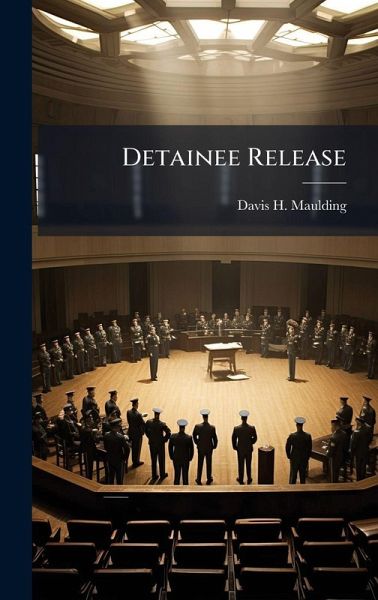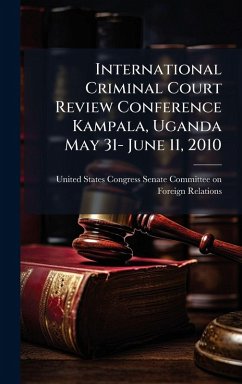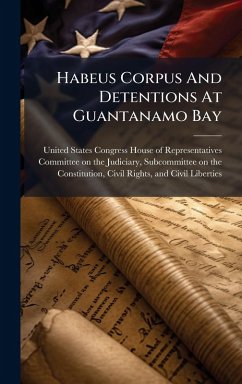
Detainee Release
Versandkostenfrei!
Versandfertig in über 4 Wochen
25,99 €
inkl. MwSt.
Weitere Ausgaben:

PAYBACK Punkte
13 °P sammeln!
Detainee Release: Legal and Moral ObligationsSince the terrorist attacks against the United States on September 11, 2001, the country has been in a state of war, in specific, a Global War on Terrorism. In the process there have been hundreds of people held in captivity by the US and its coalition partners. Eventually the detainees were transferred to the detention facility at Guantanamo Bay, Cuba, which has housed over 700 detainees at one time that the US determined were too dangerous to release. The large numbers of detainees at Guantanamo Bay eventually gained a widespread level of internat...
Detainee Release: Legal and Moral ObligationsSince the terrorist attacks against the United States on September 11, 2001, the country has been in a state of war, in specific, a Global War on Terrorism. In the process there have been hundreds of people held in captivity by the US and its coalition partners. Eventually the detainees were transferred to the detention facility at Guantanamo Bay, Cuba, which has housed over 700 detainees at one time that the US determined were too dangerous to release. The large numbers of detainees at Guantanamo Bay eventually gained a widespread level of international scrutiny once the glamour of the war efforts wore off. Since 2003, the Bush Administration and the Pentagon alike have had to work hard to maintain a proper level of understanding among the international community with regard to the treatment of the detainees and their rights. It is in the area of the detainees rights that have brought a black cloud over the US, which will linger until the war is over, and possibly forever.There has been a dramatic push by the administration in recent years to eliminate the detention facility at Guantanamo, but there have been numerous obstacles that arose, making the task at hand not so simple. This work has been selected by scholars as being culturally important, and is part of the knowledge base of civilization as we know it. This work was reproduced from the original artifact, and remains as true to the original work as possible. Therefore, you will see the original copyright references, library stamps (as most of these works have been housed in our most important libraries around the world), and other notations in the work. This work is in the public domain in the United States of America, and possibly other nations. Within the United States, you may freely copy and distribute this work, as no entity (individual or corporate) has a copyright on the body of the work. As a reproduction of a historical artifact, this work may contain missing or blurred pages, poor pictures, errant marks, etc. Scholars believe, and we concur, that this work is important enough to be preserved, reproduced, and made generally available to the public. We appreciate your support of the preservation process, and thank you for being an important part of keeping this knowledge alive and relevant.












